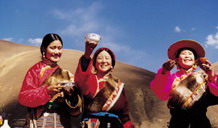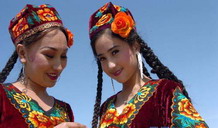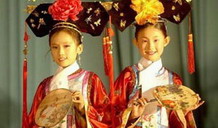Xiadiyana Dance
Xiadiyana means "joy" in the Uygur language means joy. At every New Year or other festival, Uygurs like to gather together and dance to the accompaniment of suona horns and iron drums.Xiadiyanais the joyous finale. People also danceXiadiyanain other celebrations, so it is called the joyful dance.
Twelve Muqam
Known as the "mother of Uygur music," the Twelve Muqam has a long history. Some scholars believe its origin can be traced back to the "Great Western Region Melody" that flourished during the Han (206BC-220AD) and Tang (618-907) dynasties and enjoyed a high popularity in Central China.
Stone-Beating Dance
Stone-Beating Dance is named for another Uygur folk instrument.It is a man's dance, popular in Aksu, Kashi, Shache, and Hotan counties in the southern part of Northwest China'sXinjiangUygur Autonomous Region.
Sapayi Dance
TheSapayiis a folk instrument of theUygur ethnic minority.A dance for men, theSapayiis popular in the southern areas of Northwest China'sXinjiangUygur Autonomous Region.
Sanam Dance
Sanamis the most popular folk dance among all the Uygurs.In forming the Uygur classic music called the Twelve Muqam,Sanamwas included, meaning it must be even older than the centuries-old Muqam. At the same timeSanamwas popularized among the Uygurs as an independent dance.
Dolan Dance
Unrestrained and vigorous, Dolan is an ancient Uygur folk dance popular in Maikeiti, Bachu, Shache, and Awati counties along the Yarkant River in Northwest China'sXinjiangUygur Autonomous Region.






